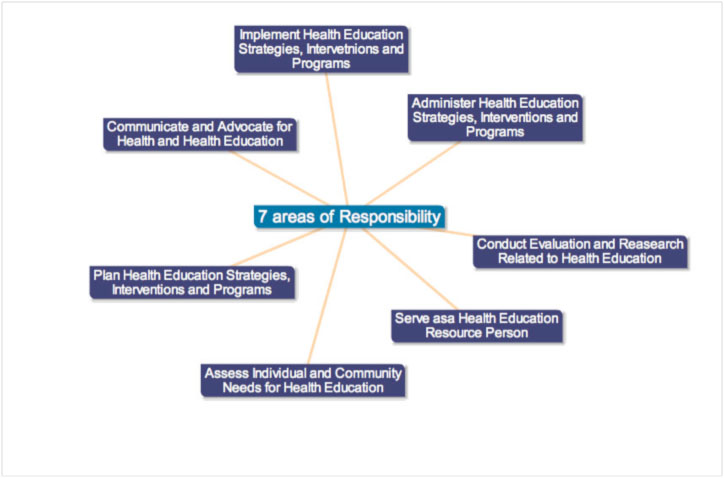|
All India Institute Of Hygiene And Public Health
All India Institute of Hygiene and Public Health (AIIH&PH) is a pioneering Indian institute for research and training in public health and allied sciences in Kolkata. It was established on 30 December 1932 with assistance from the Rockefeller Foundation. It functions under Director General of Health Services, New Delhi, Ministry of Health & Family Welfare, Government of India and is now affiliated with West Bengal University of Health Sciences, established in 2003. It also has a rural training centre in Singur and urban training centre in Chetla. In 1943, the borehole latrine was developed by AIIH&PH in collaboration with the Rockefeller Foundation. History Established with the aid of Rockefeller Foundation, AIIH&PH was inaugurated by Sir John Anderson, the Governor of Bengal on 30 December 1932. The AIIH&PH was a constituent college of the University of Calcutta. Since its inception, the college has collaborated with the Calcutta School of Tropical Medicine. In 1953, ... [...More Info...] [...Related Items...] OR: [Wikipedia] [Google] [Baidu] |
Public Health
Public health is "the science and art of preventing disease, prolonging life and promoting health through the organized efforts and informed choices of society, organizations, public and private, communities and individuals". Analyzing the determinants of health of a population and the threats it faces is the basis for public health. The ''public'' can be as small as a handful of people or as large as a village or an entire city; in the case of a pandemic it may encompass several continents. The concept of ''health'' takes into account physical, psychological, and Well-being, social well-being, among other factors.What is the WHO definition of health? from the Preamble to the Constitution of WHO as adopted by the Internationa ... [...More Info...] [...Related Items...] OR: [Wikipedia] [Google] [Baidu] |
Calcutta School Of Tropical Medicine
Calcutta School of Tropical Medicine (CSTM) is a medical institute from Kolkata, India, dedicated in the field of tropical disease. It was established in 1914 by Leonard Rogers (1868–1962) of the Indian Medical Service, professor of pathology at the Medical College and Hospital, Kolkata. It was, till 2003, affiliated with the University of Calcutta. Now it is under the West Bengal University of Health Sciences. Prominent researchers like Upendranath Brahmachari, U. N. Bramhachari, Ernest Muir (leprologist), Ernest Muir, Ronald Ross, Rabindra Nath Chaudhuri, Ram Narayan Chakravarti and Jyoti Bhusan Chatterjea, Jyoti Bhusan Chatterjee worked in this institute. Notable alumni * Ram Baran Yadav, first president of Nepal * Baba Amte, Indian Social Worker and social activist who worked for the empowerment and rehabilitation of people suffering from leprosy References External linksCalcutta School of Tropical Medicine-India Medical College and Hospital, Kolkata Healthca ... [...More Info...] [...Related Items...] OR: [Wikipedia] [Google] [Baidu] |
Microbiology
Microbiology () is the branches of science, scientific study of microorganisms, those being of unicellular organism, unicellular (single-celled), multicellular organism, multicellular (consisting of complex cells), or non-cellular life, acellular (lacking cells). Microbiology encompasses numerous sub-disciplines including virology, bacteriology, protistology, mycology, immunology, and parasitology. The organisms that constitute the microbial world are characterized as either prokaryotes or eukaryotes; eukaryote, Eukaryotic microorganisms possess membrane-bound organelles and include fungi and protists, whereas prokaryote, prokaryotic organisms are conventionally classified as lacking membrane-bound organelles and include Bacteria and Archaea. Microbiologists traditionally relied on culture, staining, and microscopy for the isolation and identification of microorganisms. However, less than 1% of the microorganisms present in common environments can be cultured in isolation using c ... [...More Info...] [...Related Items...] OR: [Wikipedia] [Google] [Baidu] |
Child Health
Pediatric nursing is part of the nursing profession, specifically revolving around the care of neonates and children up to adolescence. The word, ''pediatrics'', comes from the Greek words 'paedia' (child) and 'iatrike' (physician). 'Paediatrics' is the British/Australian spelling, while 'pediatrics' is the American spelling. Disciplines Direct nursing Nursing functions vary regionally, by individual education, experience, and individual career goals. These functions include the administration of procedures and medicines according to prescribed nursing care plans. Nurses observe vital signs and develop communication skills with children and family members, as well as with other medical personnel. Awareness of the concerns of children and parents, physical presence at times of stress, and helping children and family members cope are common functions of direct nursing care Neonatal nursing Neonatal nurses specialize in working with the youngest patients(infants). Neonatal nur ... [...More Info...] [...Related Items...] OR: [Wikipedia] [Google] [Baidu] |
Maternity
A mother is the female parent of a child. A woman may be considered a mother by virtue of having given birth, by raising a child who may or may not be her biological offspring, or by supplying her ovum for fertilisation in the case of gestational surrogacy. A biological mother is the female genetic contributor to the creation of the infant, through sexual intercourse or egg donation. A biological mother may have legal obligations to a child not raised by her, such as an obligation of monetary support. An adoptive mother is a female who has become the child's parent through the legal process of adoption. A putative mother is a female whose biological relationship to a child is alleged but has not been established. A stepmother is a non-biological female parent married to a child's preexisting parent, and may form a family unit but generally does not have the legal rights and responsibilities of a parent in relation to the child. A father is the male counterpart of a mother. Wom ... [...More Info...] [...Related Items...] OR: [Wikipedia] [Google] [Baidu] |
Health Education
Health education is a profession of educating people about health. Areas within this profession encompass environmental health, physical health, social health, emotional health, intellectual health, and spiritual health, as well as sexual and reproductive health education. It can also be defined as any combination of learning activities that aim to assist individuals and communities improve their health by expanding knowledge or altering attitudes. Health education has been defined differently by various sources. The National Conference on Preventive Medicine in 1975 defined it as "a process that informs, motivates, and helps people to adopt and maintain healthy practices and lifestyles, advocates environmental changes as needed to facilitate this goal, and conducts professional training and research to the same end." The Joint Committee on Health Education and Promotion Terminology of 2001 defined Health Education as "any combination of planned learning experiences based on sou ... [...More Info...] [...Related Items...] OR: [Wikipedia] [Google] [Baidu] |
Health Promotion
Health promotion is, as stated in the 1986 World Health Organization (WHO) Ottawa Charter for Health Promotion, the "process of enabling people to increase control over, and to improve their health." Scope The WHO's 1986 Ottawa Charter for Health Promotion and then the 2005 Bangkok Charter for Health Promotion in a Globalized World defines health promotion as "the process of enabling people to increase control over their health and its determinants, and thereby improve their health".Participants at the 1st Global Conference on Health Promotion in Ottawa, Canada, Geneva, Switzerland: World Health Organization, 1986. Retrieved September 15, 2021. Health promotion is a multifaceted approach that goes beyond individual behavior change. It encompasses a wide range of social and environmental interventions aimed at addressing health determinants such as income, housing, food security, employment, and quality working conditions. It is important to distinguish between health educat ... [...More Info...] [...Related Items...] OR: [Wikipedia] [Google] [Baidu] |
Epidemiology
Epidemiology is the study and analysis of the distribution (who, when, and where), patterns and Risk factor (epidemiology), determinants of health and disease conditions in a defined population, and application of this knowledge to prevent diseases. It is a cornerstone of public health, and shapes policy decisions and evidence-based practice by identifying Risk factor (epidemiology), risk factors for disease and targets for preventive healthcare. Epidemiologists help with study design, collection, and statistical analysis of data, amend interpretation and dissemination of results (including peer review and occasional systematic review). Epidemiology has helped develop methodology used in clinical research, public health studies, and, to a lesser extent, basic research in the biological sciences. Major areas of epidemiological study include disease causation, transmission (medicine), transmission, outbreak investigation, disease surveillance, environmental epidemiology, forensic ... [...More Info...] [...Related Items...] OR: [Wikipedia] [Google] [Baidu] |
Nutrition
Nutrition is the biochemistry, biochemical and physiology, physiological process by which an organism uses food and water to support its life. The intake of these substances provides organisms with nutrients (divided into Macronutrient, macro- and Micronutrient, micro-) which can be Metabolism, metabolized to create Food energy, energy and chemical structures; too much or too little of an essential nutrient can cause malnutrition. Nutritional science, the study of nutrition as a hard science, typically emphasizes human nutrition. The type of organism determines what nutrients it needs and how it obtains them. Organisms obtain nutrients by consuming organic matter, consuming inorganic matter, absorbing light, or some combination of these. Some can produce nutrients internally by consuming basic elements, while some must consume other organisms to obtain pre-existing nutrients. All forms of life require carbon, Biological thermodynamics, energy, and water as well as various other ... [...More Info...] [...Related Items...] OR: [Wikipedia] [Google] [Baidu] |
Biochemistry
Biochemistry, or biological chemistry, is the study of chemical processes within and relating to living organisms. A sub-discipline of both chemistry and biology, biochemistry may be divided into three fields: structural biology, enzymology, and metabolism. Over the last decades of the 20th century, biochemistry has become successful at explaining living processes through these three disciplines. Almost all List of life sciences, areas of the life sciences are being uncovered and developed through biochemical methodology and research.#Voet, Voet (2005), p. 3. Biochemistry focuses on understanding the chemical basis that allows biomolecule, biological molecules to give rise to the processes that occur within living Cell (biology), cells and between cells,#Karp, Karp (2009), p. 2. in turn relating greatly to the understanding of tissue (biology), tissues and organ (anatomy), organs as well as organism structure and function.#Miller, Miller (2012). p. 62. Biochemistry is closely ... [...More Info...] [...Related Items...] OR: [Wikipedia] [Google] [Baidu] |
Deemed University
In India, a deemed university or deemed-to-be-university is an accreditation granted to higher educational institutions by the Ministry of Education. According to the ministry's definition, the accreditation indicates, "an Institution of higher education, other than universities, working at a very high standard in specific area of study" and the accreditation grants "the academic status and privileges of a university". Deemed university status The higher education system in India includes both private and public universities. Public universities are supported by the Government of India and the state governments, while private universities are mostly supported by various bodies and societies. Universities in India are recognized by the University Grants Commission, which draws its power from the '' University Grants Commission Act, 1956''. In addition to this, 15 Professional Councils are established, controlling different aspects of accreditation and coordination. The status o ... [...More Info...] [...Related Items...] OR: [Wikipedia] [Google] [Baidu] |
Mint (newspaper)
''Mint'' is an Indian business and financial, financial daily newspaper published by HT Media, a Delhi-based media group which is controlled by the K. K. Birla, K. K. Birla family. The K. K. Birla family also publishes ''Hindustan Times''. Mint has been running since 2007 and specializes in business and politics. It publishes a single national edition distributed in New Delhi, Mumbai, Bangalore, Hyderabad, Chennai, Kolkata, Pune, Ahmedabad and Chandigarh. Mint is not published on Sunday. Every Saturday, it prints its sister magazine, Mint Lounge. It was India's first newspaper to be published in the Berliner (format), Berliner format. The former editor of the ''The Wall Street Journal Asia, Wall Street Journal India'', Raju Narisetti ran ''Mint'' from its founding in 2007 to 2008. Narisetti was succeeded by Sukumar Ranganathan, who served as an editor until 2017. In 2014, ''Mint'' and the Wall Street ''Journal'' ended their seven-year editorial partnership. The companies now h ... [...More Info...] [...Related Items...] OR: [Wikipedia] [Google] [Baidu] |






